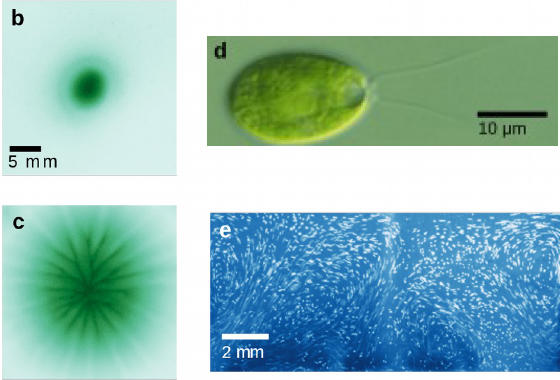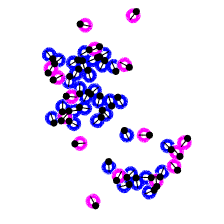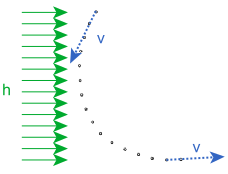Experimental active matter seminar
The Matière et Systèmes Complexes laboratory is known for its contributions to a certain physics of complexity, which combines input from non-linear physics, soft condensed matter, statistical physics, and its interfaces with biological and geological sciences. Naturally the interest in the field of active matter has strongly grown over the past years. Feeling the need for novel and well-controlled experimental systems to explore the rich physics of active matter, a group of experimental physicists at MSC has decided to exchange on a regular basis on local plans and international developments.
I organise a low-frequency, roughly once-a-month seminar in parallel to MSC’s main seminar, that is focussed on recent trends in experimental active matter. The current state of the programme for 2021 follows (in gray I added MSC monday seminars on active matter topics).
- Currently the seminars are held online using Zoom; please contact me if you would like to attend the video seminar.
- Time is local time (Paris, i.e. CET or CEST).
| 8/02 | 11h30* | Giuseppe Pucci (CNR-Nanotec Calabria) | Water sliders, capillary attraction and capillary surfers |
| 10/02 | 13:45 | Julien Dervaux & Philippe Brunet (CNRS & Univ. de Paris) | Mouvements collectifs de micro-organismes photosynthétiques |
| 22/03 | 11h30* | Rémy Colin (MPI Marburg) | Biophysics of bacterial navigation |
| 6/04 | 11h30* | Thomas Barois (Univ. de Bordaux) | Using toys as a model system to study collective behaviours and active matter |
| 14/04 | 10h CEST (=17h JST) | Daiki Nishiguchi (The University of Tokyo) | Electrokinetic Janus Particles: from self-organized flagella to ordered flocks |
| 26/04 | 16h00* | Alexander Petroff (Clark University) | Formation and dynamics of active crystals by fast-swimming bacteria |
| 25/05 | 13h45 | François A. Lavergne (Univ. de Friburg) | Group formation and cohesion of active particles with visual perception-dependent motility |
| 30/06 | 13h45 | Alexandre Morin (Univ. Leiden) | Flocks in the wind |
* regular MSC monday seminar
-
Julien Dervaux & Philippe Brunet (CNRS & Univ. de Paris) — 2021-02-10
Matière et Systèmes Complexes — CNRS & Univ. de Paris
Mouvements collectifs de micro-organismes photosynthétiques
10 February 2021 13h45
 image source: Ramamonjy, Dervaux, Brunet
image source: Ramamonjy, Dervaux, BrunetRésumé
Les micro-organismes photosynthétiques possèdent la capacité remarquable à convertir l’énergie lumineuse en biomasse. Afin d’effectuer cette activité essentielle à leur survie, de nombreux organismes motiles ont développé un système relativement primitif de “vision” qui leur permet d’évaluer la qualité de leur environnement lumineux puis de se diriger en direction des conditions les plus favorables. Ce mécanisme, appelé phototaxie, est impliqué dans divers phénomènes naturels tels que la formation des efflorescences ou la migration verticale du phytoplancton. Nous montrerons que cet effet permet de manipuler localement la concentration en micro-organismes dans une suspension active de micro-nageurs puis d’induire des effets collectifs surprenants tels que des écoulements macroscopiques.
-
Daiki Nishiguchi (Tōdai) — 2021-04-14
Physics Department — The University of Tokyo
Electrokinetic Janus particles — from self-organized flagella to ordered flocks
14 April 2021 10h00
unusual time !
 image source: Nishiguchi et al New J. Phys. 2017
image source: Nishiguchi et al New J. Phys. 2017Abstract
We present our experimental attempts to reveal universal properties in active matter systems by using a highly controllable self-propelled Janus particles fueled by a vertical AC electric field [1]. Three experimental control parameters, the amplitude and the frequency of the electric field and the ion concentration of the suspension, enable us to fine-tune the swimming speed, the direction of motion, and the inter-particle interactions [2], which give rise to various macroscopic behavior such as active turbulence [1], active chains [2], active Brownian particle-like behavior [3] and long-range orientational order [4].
In this talk, I will first explain a scaling law seen in flagellum-like beating behavior of self-organized chains of Janus particles [2], which kindly introduces you the mechanisms of self-propulsion and interactions of the Janus particles. Then, I will show you our recent results on ordered colloidal flocks which exhibit features reminiscent of the Vicsek model such as true long-range order and giant number fluctuations [4]. Independent measurements of the polarity and velocity at the single particle level further allowed the investigation of the single particle dynamics within the ordered state. We discovered theoretically unaddressed statistical properties of the ordered state such as the asymmetric relation of polarity and velocity, enhanced rotational diffusion stronger than in the disordered state, and an algebraic auto-correlation of the polarity. We anticipate that our experimental findings will work to connect the Vicsek physics and the Active Brownian Particles physics.
References
- D. Nishiguchi, M. Sano: “Mesoscopic turbulence and local order in Janus particles self-propelling under an ac electric field”, Phys. Rev. E 92, 052309 (2015) https://arxiv.org/abs/1506.06591
- D. Nishiguchi, J. Iwasawa, H.-R. Jiang, M. Sano: “Flagellar dynamics of chains of active Janus particles fueled by an AC electric field”, New J. Phys. 20, 015002 (2018) https://iopscience.iop.org/article/10.1088/1367-2630/aa9b48
- A. Poncet, O. Bénichou, V. Démery, D. Nishiguchi: “Pair correlation of dilute Active Brownian Particles: from low-activity dipolar correction to high-activity algebraic depletion wings”, Phys. Rev. E 103, 012605 (2021) https://arxiv.org/abs/2006.08202
- J. Iwasawa, D. Nishiguchi, M. Sano: “Algebraic correlations and anomalous fluctuations in ordered flocks of Janus particles fueled by an AC electric field”, https://arxiv.org/abs/2011.14548
-
François A. Lavergne (Univ. de Fribourg) — 2021-05-25
Department of Physics, University of Fribourg, Chemin du Musée 3, 1700, Fribourg, Switzerland†
Group formation and cohesion of active particles with visual perception-dependent motility
25 May 2021 13h45
† work performed at: Department of Physics, University of Konstanz, 78464 Konstanz, Germany
 image source: F. Lavergne
image source: F. LavergneAbstract
The formation of cohesive groups of individuals is often thought to result from a delicate balance of repulsive, aligning, and attractive social interactions [1]. However, the variety of natural situations in which cohesion occurs suggests the existence of more robust mechanisms, operating at various length scales and noise levels. Here we show that the mere action of moving when crowded regions are in sight is sufficient to induce group cohesion [2], provided that individuals have a long-range and anisotropic “vision-like” perception of their peers [3,4]. We test this principle on light-responsive active colloids, whose velocities can be individually varied using an external feedback loop [2,5]. When perception is restricted to a narrow field of view, particles gather into cohesive non-polarised groups, without active reorientations nor attractive forces. For wider fields of view, cohesion is allowed by increasing particles’ reactivity. We argue that this cohesive active fluid state results from a generic instability of the density when the motility increases as a function of a long-range and anisotropic perception. Such motility-induced cohesion may be relevant in natural contexts as well as a robust and scalable mean to aggregate artificial robots without centralised control [6].
References
- I. D. Couzin, J. Krause, R. James, G. D. Ruxton, N. R. Franks, J. Theor. Biol. 218, 1 (2002).
- F. A. Lavergne, H. Wendehenne, T. Bäuerle, C. Bechinger, Science 364, 6435 (2019).
- L. Barberis, F. Peruani, Phys. Rev. Lett. 117, 248001 (2016).
- D. J. G. Pearce, A. M. Miller, G. Rowlands, M. S. Turner, Proc. Natl. Acad. Sci. U.S.A. 111, 10422 (2014).
- T. Bäuerle, A. Fischer, T. Speck, C. Bechinger, Nat. Commun. 9, 3232 (2018).
- I. Slavkov et al., Sci. Robot. 3, 9178 (2018).
-
Alexandre Morin (Univ. Leiden) — 2021-06-30
Biological, Soft and Complex Systems — Institute of Physics — Universiteit Leiden
Flocks in the wind
30 June 2021 13h45
 image source: Morin & Bartolo, PRX 2018
image source: Morin & Bartolo, PRX 2018Abstract
How do flocks navigate when it’s windy? By combining model experiments and theory, I investigate the response of flocks, or active ferromagnets, to external fields. I will demonstrate their hysteric response and show how orientational elasticity and confinement act together to protect the direction of collective motion - up to a limit where flocks are forced to fly along the wind.
References
- A. Morin, D. Bartolo, Phys. Rev. X 8, 021037 (2018) 10.1103/PhysRevX.8.021037
Last modified: 30 Jun 2021